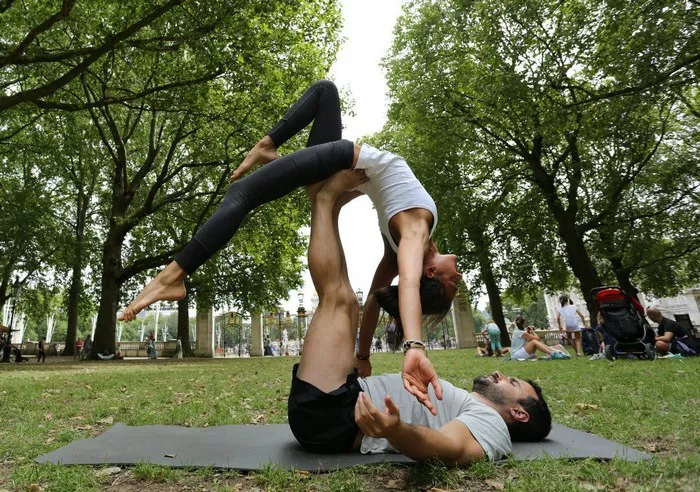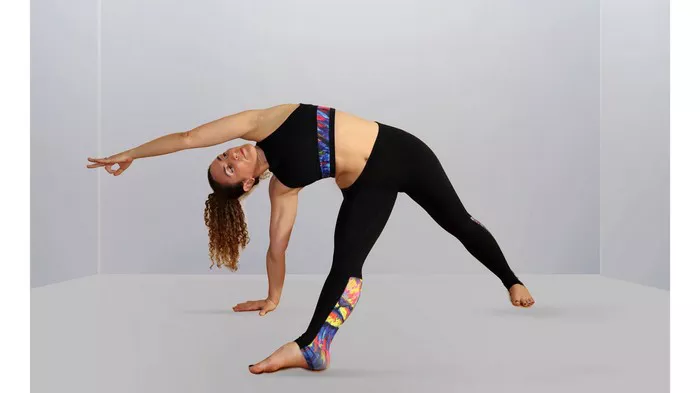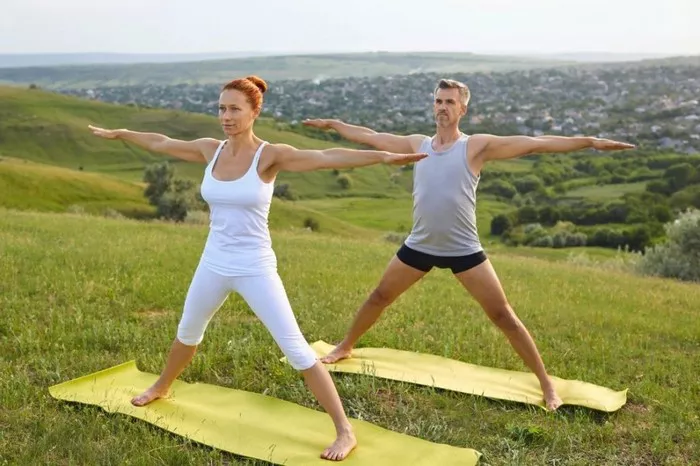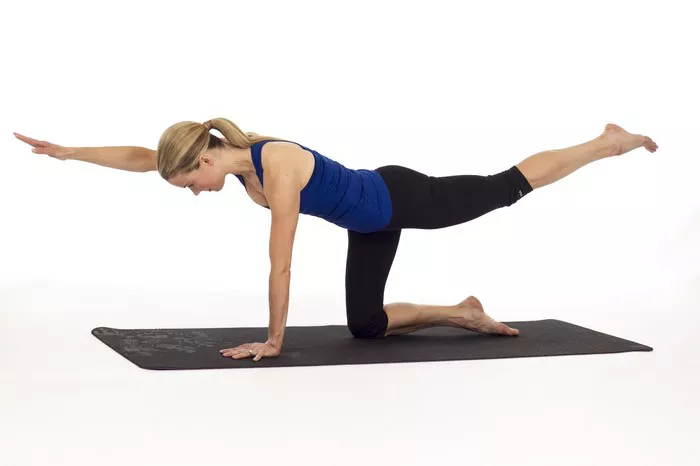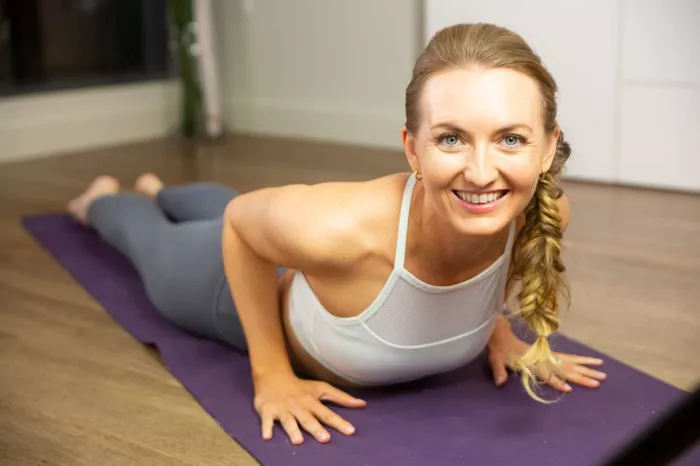Acro yoga is a unique blend of acrobatics, yoga, and Thai massage, offering a dynamic and exciting way for two people to connect and build trust. This practice, which often involves one partner acting as a base and the other as a flyer, can improve strength, flexibility, and communication between partners. Whether you’re new to acro yoga or looking to expand your repertoire, here are some essential acro yoga poses for two people.
Benefits of Acro Yoga
Before diving into specific poses, it’s important to understand the benefits of acro yoga. This practice not only enhances physical fitness but also fosters emotional and mental well-being. Here are some key benefits:
Improved Strength and Flexibility: Acro yoga involves lifting, balancing, and holding poses that engage various muscle groups, helping to build strength and increase flexibility.
Enhanced Communication: Successful execution of acro yoga poses requires clear communication and trust between partners, fostering deeper connections.
Increased Body Awareness: Both the base and flyer need to be acutely aware of their bodies and their partner’s movements, which enhances proprioception and body awareness.
Stress Relief: Like traditional yoga, acro yoga can help reduce stress and anxiety through focused breathing and mindful movement.
Fun and Playfulness: Acro yoga introduces an element of play, making exercise enjoyable and providing a break from routine workouts.
Basic Safety Guidelines
Safety is paramount in acro yoga. Here are some essential guidelines to follow:
Warm-Up: Always start with a thorough warm-up to prepare your muscles and joints for the demands of acro yoga.
Communication: Constantly communicate with your partner, using clear and concise instructions and feedback.
Spotting: Use a spotter, especially when attempting new poses. A spotter can provide physical support and guidance, reducing the risk of injury.
Progress Gradually: Begin with simple poses and progress to more complex ones as you build strength and confidence.
Listen to Your Body: Pay attention to your body’s signals and avoid pushing beyond your limits to prevent injury.
Essential Acro Yoga Poses for Two People
1. Front Plank (Plank on Plank)
Description: This foundational pose involves one partner (the base) lying on their back with their legs straight up, while the other partner (the flyer) balances in a plank position on the base’s feet.
Steps:
The base lies on their back with legs extended upwards, feet flexed.
The flyer stands at the base’s feet, leaning forward to place their hips onto the base’s feet.
The base grips the flyer’s shoulders or upper arms for stability.
The flyer engages their core and lifts their legs, coming into a plank position.
Maintain communication and balance, holding the pose for a few breaths before carefully dismounting.
Benefits:
Strengthens the core, shoulders, and legs.
Enhances balance and coordination.
2. Bird Pose
Description: Bird pose is a classic acro yoga position where the base supports the flyer horizontally, resembling a bird in flight.
Steps:
The base lies on their back with legs bent and feet parallel to the ground.
The flyer stands at the base’s feet, then leans forward to place their hips onto the base’s feet.
The base holds the flyer’s hips or thighs for stability.
The flyer extends their arms forward and lifts their legs behind, coming into a horizontal position.
The base straightens their legs, supporting the flyer in the air.
Hold the pose for a few breaths, maintaining balance and communication.
Benefits:
Strengthens the legs and core.
Enhances balance and trust between partners.
3. Throne Pose
Description: In Throne pose, the flyer sits on the base’s feet, mimicking the appearance of sitting on a throne.
Steps:
The base lies on their back with legs bent and feet parallel to the ground.
The flyer stands at the base’s feet, then bends their knees to sit on the base’s feet.
The base holds the flyer’s shins for stability.
The flyer extends their arms to the sides for balance.
The base slowly straightens their legs, lifting the flyer into the air.
Hold the pose, maintaining balance and communication.
Benefits:
Strengthens the legs and core.
Enhances balance and stability.
4. Star Pose
Description: Star pose is an intermediate acro yoga position where the flyer balances in a horizontal position on the base’s hands and feet.
Steps:
The base lies on their back with legs extended upwards and arms reaching towards the flyer.
The flyer stands at the base’s feet, then leans forward to place their hips onto the base’s feet.
The base grips the flyer’s hips or upper thighs for stability.
The flyer extends their arms and legs outward, coming into a horizontal position.
The base supports the flyer’s weight with their hands and feet.
Hold the pose, maintaining balance and communication.
Benefits:
Strengthens the core, shoulders, and legs.
Enhances balance and coordination.
5. Reverse Bird Pose
Description: Reverse Bird is a variation of Bird pose where the flyer faces the opposite direction, adding a different challenge to the balance.
Steps:
The base lies on their back with legs bent and feet parallel to the ground.
The flyer stands at the base’s feet, then leans backward to place their hips onto the base’s feet.
The base holds the flyer’s hips or thighs for stability.
The flyer extends their arms backward and lifts their legs forward, coming into a horizontal position.
The base straightens their legs, supporting the flyer in the air.
Hold the pose for a few breaths, maintaining balance and communication.
Benefits:
Strengthens the legs and core.
Enhances balance and trust between partners.
6. Foot to Hand
Description: Foot to Hand is an advanced acro yoga pose where the base lifts the flyer into the air using their feet and hands.
Steps:
The base lies on their back with legs bent and feet parallel to the ground.
The flyer stands at the base’s feet, then places their hands onto the base’s feet.
The base grips the flyer’s hands for stability.
The flyer lifts their feet off the ground, coming into a vertical position supported by the base’s feet and hands.
The base straightens their legs and arms, lifting the flyer into the air.
Hold the pose for a few breaths, maintaining balance and communication.
Benefits:
Strengthens the legs, core, and arms.
Enhances balance and coordination.
See Also: How Much Is Corepower Yoga Membership?
7. High Flying Whale
Description: High Flying Whale is a pose where the flyer lies on the base’s feet, creating an arch with their back.
Steps:
The base lies on their back with legs bent and feet parallel to the ground.
The flyer stands at the base’s feet, then leans backward to place their lower back onto the base’s feet.
The base holds the flyer’s shoulders or upper back for stability.
The flyer extends their arms and legs backward, creating an arch with their back.
The base straightens their legs, lifting the flyer into the air.
Hold the pose, maintaining balance and communication.
Benefits:
Strengthens the legs and core.
Enhances flexibility and balance.
8. Chair Pose
Description: Chair Pose is an advanced pose where the flyer sits on the base’s hands and feet, resembling a seated position.
Steps:
The base lies on their back with legs bent and feet parallel to the ground.
The flyer stands at the base’s feet, then places their hands onto the base’s hands.
The base grips the flyer’s hands for stability.
The flyer bends their knees and sits on the base’s feet, coming into a seated position.
The base straightens their legs and arms, lifting the flyer into the air.
Hold the pose for a few breaths, maintaining balance and communication.
Benefits:
Strengthens the legs, core, and arms.
Enhances balance and coordination.
9. L-Basing Side Star
Description: In L-Basing Side Star, the flyer balances sideways on the base’s feet and hands, creating a star-like shape.
Steps:
The base lies on their back with legs bent and feet parallel to the ground.
The flyer stands at the base’s feet, then leans sideways to place their hips onto the base’s feet.
The base grips the flyer’s hips or upper thighs for stability.
The flyer extends their arms and legs sideways, coming into a horizontal position.
The base supports the flyer’s weight with their hands and feet.
Hold the pose, maintaining balance and communication.
Benefits:
Strengthens the core, shoulders, and legs.
Enhances balance and coordination.
10. Standing Hand to Hand
Description: Standing Hand to Hand is an advanced acro yoga pose where the base and flyer hold hands and balance on each other’s hands.
Steps:
The base stands with feet shoulder-width apart.
The flyer stands in front of the base, facing away.
The base and flyer hold hands, creating a firm grip.
The flyer lifts one foot off the ground, balancing on the base’s hands.
The base supports the flyer’s weight with their hands.
Hold the pose for a few breaths, maintaining balance and communication.
Benefits:
Strengthens the legs, core, and arms.
Enhances balance and coordination.
Tips for Practicing Acro Yoga
Practice Regularly: Consistency is key to improving in acro yoga. Aim to practice several times a week to build strength and familiarity with the poses.
Stay Patient: Progress in acro yoga can be slow, especially for beginners. Stay patient and celebrate small achievements.
Maintain a Positive Attitude: Keep a positive and playful attitude during practice. This helps reduce frustration and enhances the overall experience.
Use Yoga Mats: Practice on yoga mats or other soft surfaces to reduce the risk of injury from falls.
Cool Down: Finish each practice session with a cool-down routine, including gentle stretches and relaxation poses.
Conclusion
Acro yoga is a wonderful way for two people to connect, build strength, and have fun together. By following safety guidelines and practicing regularly, you can master these acro yoga poses and enjoy the many physical and emotional benefits they offer. Remember to communicate clearly with your partner, stay patient, and maintain a positive attitude throughout your practice. Whether you’re a beginner or an experienced practitioner, acro yoga can provide a rewarding and enriching experience.
Related topics:

